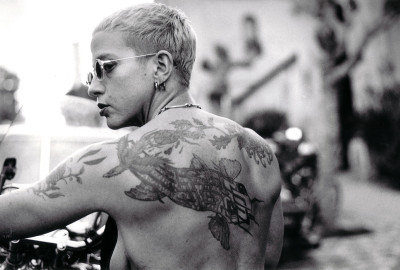Cornelia Parker RA: my artistic influences
Cornelia Parker RA: my artistic influences
By Cornelia Parker
Published 10 October 2022
With her major show currently at Tate Britain, the renowned sculptor and installation artist shares her guiding lights, from Duchamp to Yves Klein, string, and the Summer Exhibition.
-
From the Summer 2022 issue of RA Magazine, issued quarterly to Friends of the RA.
-
-

Ephemeral, elusive monumentality
I recently came across an exhibition guide for a 1996 group show I took part in early on in my career. When asked to contribute an artist’s statement I wrote about some key works that had inspired me. Claes Oldenburgh’s ‘Proposed Monuments’ series, Kurt Schwitters’s Mertzbau, Christo and Jeanne-Claude’s Running Fence (1972-76), Gaudi’s canvas and wire architectural models, and Richard Long RA’s walks.
What these works had in common was an ephemeral, elusive monumentality, existing only in documentary form, in drawing and in photographs. They had a performative, mythic quality, and were made specifically for a chosen location. As a student those qualities changed the way I thought about sculpture.
-
-
-

Non-traditional techniques and materials
In response to those early influences, I have since made large-scale, immersive installations that draw on the senses. But there is another strand to my work that is smaller, quieter, more subliminal. Those works, my ‘Avoided Objects’ – items that have been fractured, unmade, the unclassified and pre-empted – have been inspired by a different group of artists. These include Piero Manzoni, especially his balloons, long since deflated (Breath of an Artist, 1960), and his lines drawn on continuous rolls of paper which were then rolled and hidden in sealed cardboard tubes.
Manzoni was a forerunner of Arte Povera, an Italian art movement from the late 1960s that I found very liberating, especially in its artists’ choice of non-traditional techniques and materials. Their work was refreshing in comparison to that of indomitable British sculptors, such as Henry Moore and Barbara Hepworth. I had always thought the history of sculpture was dominated by the lump of bronze or stone on the plinth. I began to think more about the earliest known art, cave paintings, and I realised that these were early site-specific installations, illuminated and drawn using fire.
-
-
-

Performative, symbolic gestures
I love Yves Klein, an autodidact and extrovert who explored impossible ideas about mapping the void and made a symbolic gesture of signing the sky. He was a minimalist who painted monochromes in various hues, including his unique International Klein Blue.
He was also a flamboyant performer and showman. His processes were very often acted out, most famously by throwing himself out of an upstairs window into the void. The only record of the event is a doctored photo where his soft landing has been erased – Leap into the Void from 1960.
-
-
-

The Summer Exhibition
My ‘Stolen Thunder’ monochrome prints, which I have exhibited in past RA Summer Exhibitions, bear testament to Klein’s influence. I photographed one of the most successful prints from a previous Summer Exhibition, featuring a bird. What attracted me was not the image itself, but all the red spots signifying abundant sales, which were stuck onto the frame. I covetously wished they were mine, so I digitally erased the bird and replaced it with a blank white monochrome (with a nod to Rauschenberg’s Erased de Kooning Drawing) and kept the spots in the image.
I entered my modified print into the next Summer Exhibition and accrued my own sales, aided by visitors’ Pavlovian responses to my stolen red dots. I photographed my red dot-adorned print on the wall, and the result appeared in the following year’s Summer show, creating another image of a frame within a frame, and another line of red dots. The process was repeated again the next year. Two later monochromes were Stolen Thunder (Once Removed) (2017), which featured a redacted cat, with a black square nodding to Malevich, and Seeing Red, a red square covering an image of a dog, which is a nod to Yves Klein. I like the idea of toying with abstraction with the attendant noise of commerce being part of the subject.
-
-
-

Neglected things – and string
Marcel Duchamp must be one of my most enduring influences: his interest in neglected things, ephemera, ordinary everyday objects, in negative space, in string. Expounding his concept of ‘infra-mince’ or the ‘infrathin’, notoriously difficult to describe, he gave examples: the difference between a new shirt and a shirt worn once, or between two objects cast from the same mould, or the noise of a gun firing and the time taken for a bullet hole to appear in the target.
The works of mine that he has influenced are many, most of them obliquely. In 1942, Duchamp enmeshed an exhibition space full of artworks in string; two pieces in my current exhibition at Tate Britain quote this directly, The Distance (A Kiss With String Attached) (2003) and The Distance (With Concealed Weapon) (2014). For the former, I wrapped up Rodin’s The Kiss with a mile of string, for the 2003 Tate Triennial, concealing the heads and torsos of the lovers. During that exhibition, the piece was vandalised by Stuckists, who cut off the string. I restored the string by knotting it all together and reapplying it to the marble sculpture, a remedy which I hope would have met with the approval of Duchamp. For the 2014 work, I wound the knotted string into a large ball, enmeshing within it a concealed weapon.
-
-
-

Enjoyed this article?
Become a Friend to receive RA Magazine
As well as free entry to all of our exhibitions, Friends of the RA enjoy one of Britain’s most respected art magazines, delivered directly to your door. Why not join the club?
-









